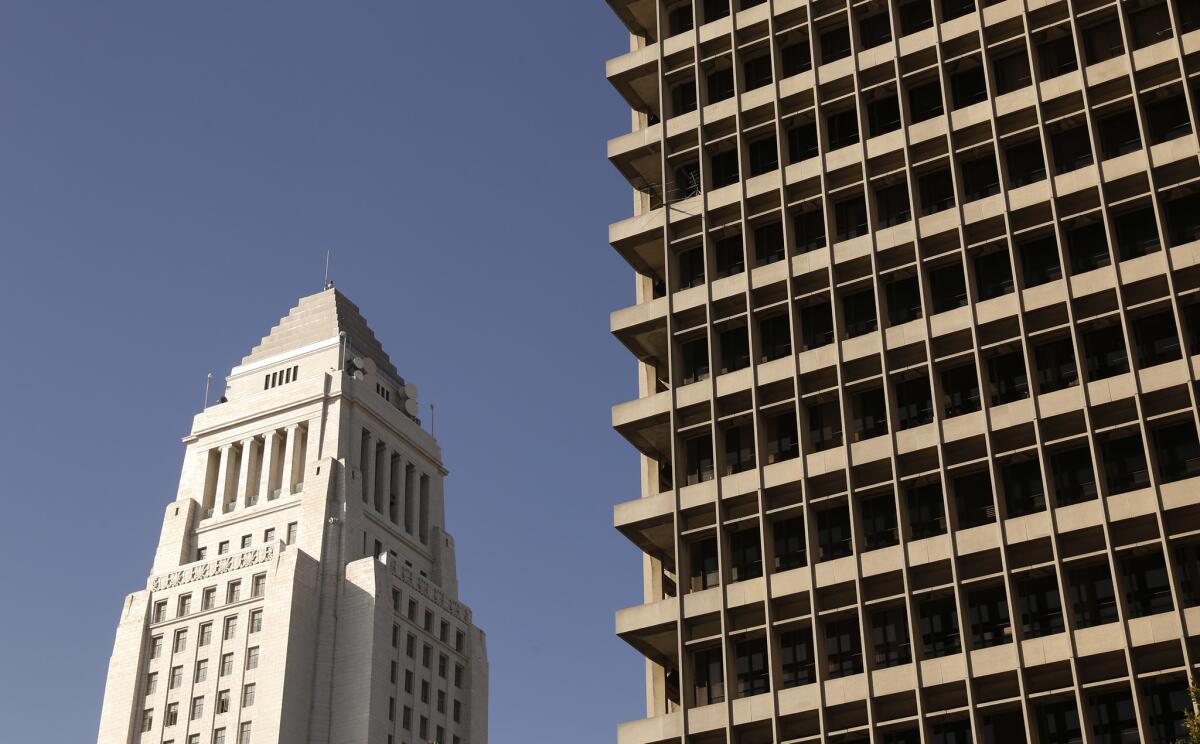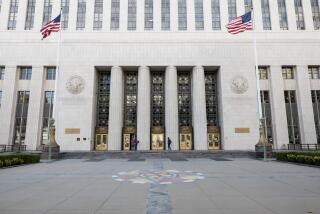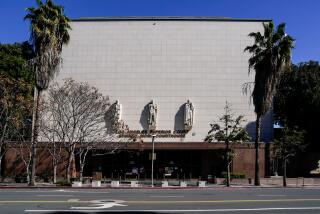The wisdom and peril of closing courthouses to the public

- Share via
Closing courthouses to the public, as Los Angeles Superior Court Presiding Judge Kevin Brazile did Tuesday, is a prudent move during the current public health emergency, but at the same time it puts at risk some basic rights and raises questions about how well — or how poorly — the nation’s largest trial court has kept up with modern times.
It is of course no surprise that the novel coronavirus has hit the court hard. Courthouses bring together criminal suspects who have been housed in densely packed jails, law enforcement officers who have close contact with the public on a daily basis, prosecutors, defense lawyers, court staff, witnesses, jurors, civil litigants, their lawyers and others — including members of the general public, who have a right to observe their justice system personally.
All those people, though, also deserve protection from the novel coronavirus. One juvenile dependency court judge is currently quarantined after having been diagnosed with COVID-19 (although not tested). Also quarantined are the lawyers, clerks and staff who served in that judge’s courtroom. Public health experts agree that the best protection is “social distancing,” and in many cases that requires closing courts and postponing hearings.
But especially on the criminal side, some court proceedings must go forward in order to protect defendants’ 6th Amendment rights to a speedy and public trial.
The “public” part of that protection is sometimes forgotten. It’s not absolute, and the Constitution may require it to apply only to trials, not to status conferences, say, or bail hearings. And it’s an explicit right of the defendant, not necessarily of the public.
But public access to judicial court is an essential part of American liberty and cannot be cast aside lightly. The public has the right and obligation to monitor its criminal justice system.
Brazile’s order makes it clear that news media can continue to enter courthouses to cover hearings, and that’s appropriate, because reporters can act as the public’s eyes and ears at hearings that are otherwise closed at the moment. But it is not sufficient; the public’s right to know what’s happening in the courthouse goes beyond just having reporters there. For one thing, no reporter can cover all courtrooms all the time, and furthermore, non-reporters also have legitimate reasons to be present. For example, there are people currently trying to collect data in each courtroom during bail review hearings to assess the fairness of the bail system.
So how to balance that basic right of access against the very real public health emergency?
Modern technology can help supply the answer. In a few other counties around the state, select proceedings have been livestreamed.
Televising and livestreaming are hardly innovations, but they are used too rarely in court. In California, courts have been slow to adopt technological solutions that would open hearings to more public scrutiny even in non-emergency times, sometimes because judges resent “prying” eyes, but also because strapped budgets have prevented modernization.
The Los Angeles Superior Court is set to begin video coverage of some criminal and juvenile proceedings as soon as next week, but only a few courtrooms will be covered. Meanwhile, the public is properly protected from coronavirus — but not from being aced out of its right to view public business in court.
More to Read
A cure for the common opinion
Get thought-provoking perspectives with our weekly newsletter.
You may occasionally receive promotional content from the Los Angeles Times.









